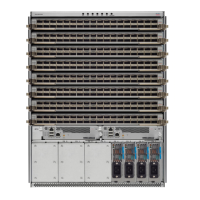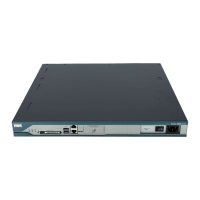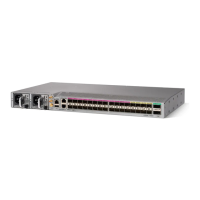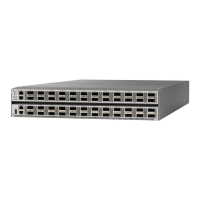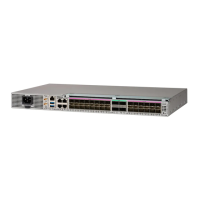•
CDP
•
LACP port priority
•
Debounce
•
UDLD
•
Shutdown
•
SNMP traps
Suspended and Isolated States
If the operational parameters are incompatible, the compatibility check fails and the interface is placed in a
suspended or isolated state based on the configured mode:
•
An interface enters the suspended state if the interface is configured in the On mode.
•
An interface enters the isolated state if the interface is configured in the Active mode.
Adding an Interface to a SAN Port Channel
To add an interface to a SAN port channel, perform this task:
Procedure
PurposeCommand or Action
Enters global configuration mode.switch# configure terminal
Step 1
Enters configuration mode for the specified interface.
switch(config)# interface type
slot/port
Step 2
If this is a QSFP+ GEM, the slot/port syntax is
slot/QSFP-module/port.
Note
Adds the Fibre Channel interface to the specified channel
group. If the channel group does not exist, it is created.
The port is shut down.
switch(config-if)# channel-group
channel-number
Step 3
Forcing an Interface Addition
You can force the port configuration to be overwritten by the SAN port channel. In this case, the interface is
added to a SAN port channel.
•
If you use the default On mode to avoid inconsistent states across switches and to maintain consistency
across switches, then the ports shut down. You must explicitly enable those ports again.
•
If you use the Active mode, then the port channel ports automatically recover from the addition.
Cisco Nexus 5500 Series NX-OS SAN Switching Configuration Guide, Release 7.x
104 OL-30895-01
Configuring SAN Port Channels
Interfaces in a SAN Port Channel

